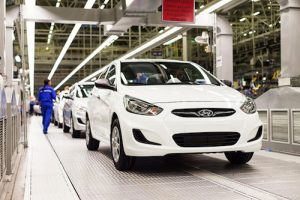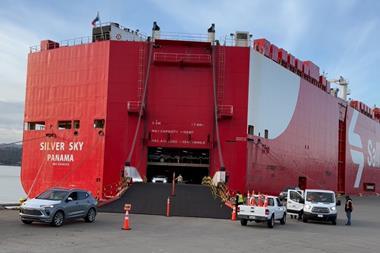 Korean carmaker Hyundai is planning to launch exports of it Solaris model to Egypt from its St. Petersburg plant in Russia. The move it designed to increase its share in the Egyptian market while also compensating for losses in Russia, which saw a drop in overall car sales in April this year of 42%. Hyundai’s choice of Egypt for Russian exports follows earlier reports that the carmaker was looking at the European region.
Korean carmaker Hyundai is planning to launch exports of it Solaris model to Egypt from its St. Petersburg plant in Russia. The move it designed to increase its share in the Egyptian market while also compensating for losses in Russia, which saw a drop in overall car sales in April this year of 42%. Hyundai’s choice of Egypt for Russian exports follows earlier reports that the carmaker was looking at the European region.
Representatives of the Russian division of Hyundai confirmed that the company has now entered into negotiations with potential partners in Egypt for the launch of supplies. Within the month the company expects to receive all necessary documentation from the Russian authorities to do so.
“In late March, the plant submitted an application for a certificate of origin to the Committee on Industrial Policy and Innovation of St. Petersburg,” said the head of the committee, Maxim Meyksin. He said the document granted the right for companies to export outside the Commonwealth of Independent States – including all territory in the post-Soviet Union regions.
While Egypt will probably be the first export market for Hyundai cars made in Russia it is not likely to be the only one. A spokesperson for Hyundai Motor Manufacturing Rus said the company was currently working on the development of an export plan, which is expected to be finished by July.
Further information from Auto-Dealer-SPb, which is working with Hyundai, suggests that after the launch of supplies to Egypt the carmaker may also look at exports to Finland, where demand is good and logistics spends are low. Hyundai may also look at countries in Eastern Europe and Iran. The overall volume of supplies could reach between 25,000-30,000 cars per year.
“Last year, the Hyundai brand became the most popular in [Egypt], as it accounts for about 20% of the passenger car market there, equal to around 40,000 cars,” said the head of Auto-Dealer-SPb, Michail Chaplygin. “The volume of exports in the first stage will hardly exceed 5,000-10,000 cars per year. The current capacity of St. Petersburg assembly allows export of such amount,” he said.
In 2014 Hyundai’s plant in St. Petersburg made 237,000 cars. Of that number, 26,100 cars were exported to the CIS market outside Russia. The carmaker’s largest foreign sales market last year was Kazakhstan, accounting for the great majority at 21,900 cars. The volume of sales on the Russian market last year amounted to 179,631 cars, which is only 0.8% lower than in 2013.
The overall decrease of the market size last year was 10.3%, so Hyundai was one of the most successful carmakers in Russia in 2014. However, according to industry experts, despite this success, diversification of export supplies would be profitable for the carmaker, with the devaluation of the Russian ruble and the resulting lower logistic spends being one of the factors.
According to Chaplygin, focusing on exports is currently advantageous given the current capacities and employment of personnel at the car plants in Russia.
“Foreign assembly plants were designed with a forecast that the capacity of the automotive market in Russia would be within 4-5m cars sold per year,” he said. “Now this number is simply impossible to achieve. Therefore, in St. Petersburg, every assembly plant can allocate 10-20% of all capacity for export.”
.



































